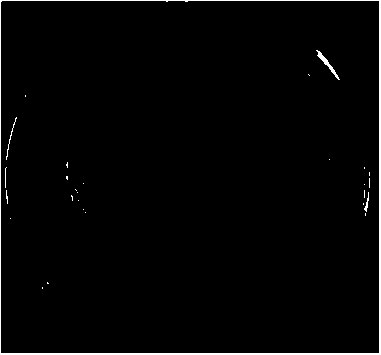Lignocellulose degrading complex bacterium system and application
A technology of lignocellulose and compound bacteria, applied in the field of applied microorganisms, can solve the problems of high cost, high pollution, high consumption, etc., and achieve the effects of easy realization of energy, short fermentation period and energy saving
- Summary
- Abstract
- Description
- Claims
- Application Information
AI Technical Summary
Problems solved by technology
Method used
Image
Examples
Embodiment 1
[0027] Example 1 Screening and cultivation of complex bacterial strains
[0028] Enrichment medium: NaNO 3 0.5g, K 2 HPO 4 1g, MgSO 4 .7H 2 O 0.5g, KCl 0.5g, FeSO 4 ·7H 2 O 0.005g, filter paper 2g, distilled water 1000mL, pH natural, sterilize at 121°C for 20min.
[0029] Screening medium: peptone cellulose medium (PCS): peptone 5g, yeast extract 1g, NaCl 5g, dissolved in 1000mL water, corn stalks added 1% (w(g) / v(mL)), that is, add 10g corn stalks with natural pH, and a 60cm*10cm filter paper strip as a screening index, sterilized at 121°C for 20min.
[0030] Bacteria isolation medium: peptone 10g, yeast extract 5g, NaCl 10g, agar 20g, dissolved in 1000mL water, pH 7.0~7.2, sterilized at 121°C for 20min.
[0031] Collect several 5g samples from different positions of agricultural straw compost located in the biomethane production workshop of Nanjing University of Technology, put them in 250 mL Erlenmeyer flasks, add 50 mL sterile water to mix, and incubate at 37 °C ...
Embodiment 2
[0033] The identification of embodiment 2 strains
[0034] 1. Morphological Identification of Strains
[0035] The isolated and purified strains were inoculated on solid LB medium, and cultivated under suitable conditions for a period of time to observe the plate colony morphology of the strains. Among them, the formula of solid LB medium is: peptone 10 g, yeast extract 5 g, NaCl 10 g, agar 20 g, dissolved in 1000 mL water, pH 7.0-7.2, sterilized at 121 °C for 20 min.
[0036] Such as figure 1 , strain CDM2, after growing on solid LB medium for 1 day, the colony diameter was 3~6cm, irregular protrusions in shape, translucent cream color, dry surface, flake-like blisters, no special smell; as figure 2 , strain CDM3, white, light yellow on the back, round or irregular, opaque, with a film on the surface, dull; as image 3 , strain CDM4, yellow, round or irregular, dry, rough; as Figure 4 , Strain CDM7, the thallus is short rod-shaped, can form endophytic spores, the spora...
Embodiment 3
[0043] Example 3 Investigation of the characteristics of compound bacteria system applied to straw pretreatment
[0044] Air-dried and washed corn stalks (collected in Siyang County, Jiangsu Province) were selected, crushed and passed through a 40-mesh sieve, 1.5 g was accurately weighed, placed in a 250 mL Erlenmeyer flask, sealed with tin foil, and sterilized at 121 °C for 20 min. After being sterilized, add 142.5mL of sterilized PCS medium, and inoculate 7.5mL of complex bacterial strains (the fermented bacterial liquid of four strains is based on the volume ratio of Bacillus subtilis, Bacillus bacillus, Alcaligenes faecalis and Bacillus amyloliquefaciens 2:1:1:2 mixed evenly), 37 ℃ static culture. Samples were taken on days 0, 1, 3, 5, 7, 9, and 12 to determine the total mass reduction rate of straw and the mass reduction rate of each component ( Figure 5 ), bacterial growth concentration OD, fermentation broth pH ( Figure 6 ), key enzyme activities (cellulase activity...
PUM
 Login to View More
Login to View More Abstract
Description
Claims
Application Information
 Login to View More
Login to View More - R&D
- Intellectual Property
- Life Sciences
- Materials
- Tech Scout
- Unparalleled Data Quality
- Higher Quality Content
- 60% Fewer Hallucinations
Browse by: Latest US Patents, China's latest patents, Technical Efficacy Thesaurus, Application Domain, Technology Topic, Popular Technical Reports.
© 2025 PatSnap. All rights reserved.Legal|Privacy policy|Modern Slavery Act Transparency Statement|Sitemap|About US| Contact US: help@patsnap.com



